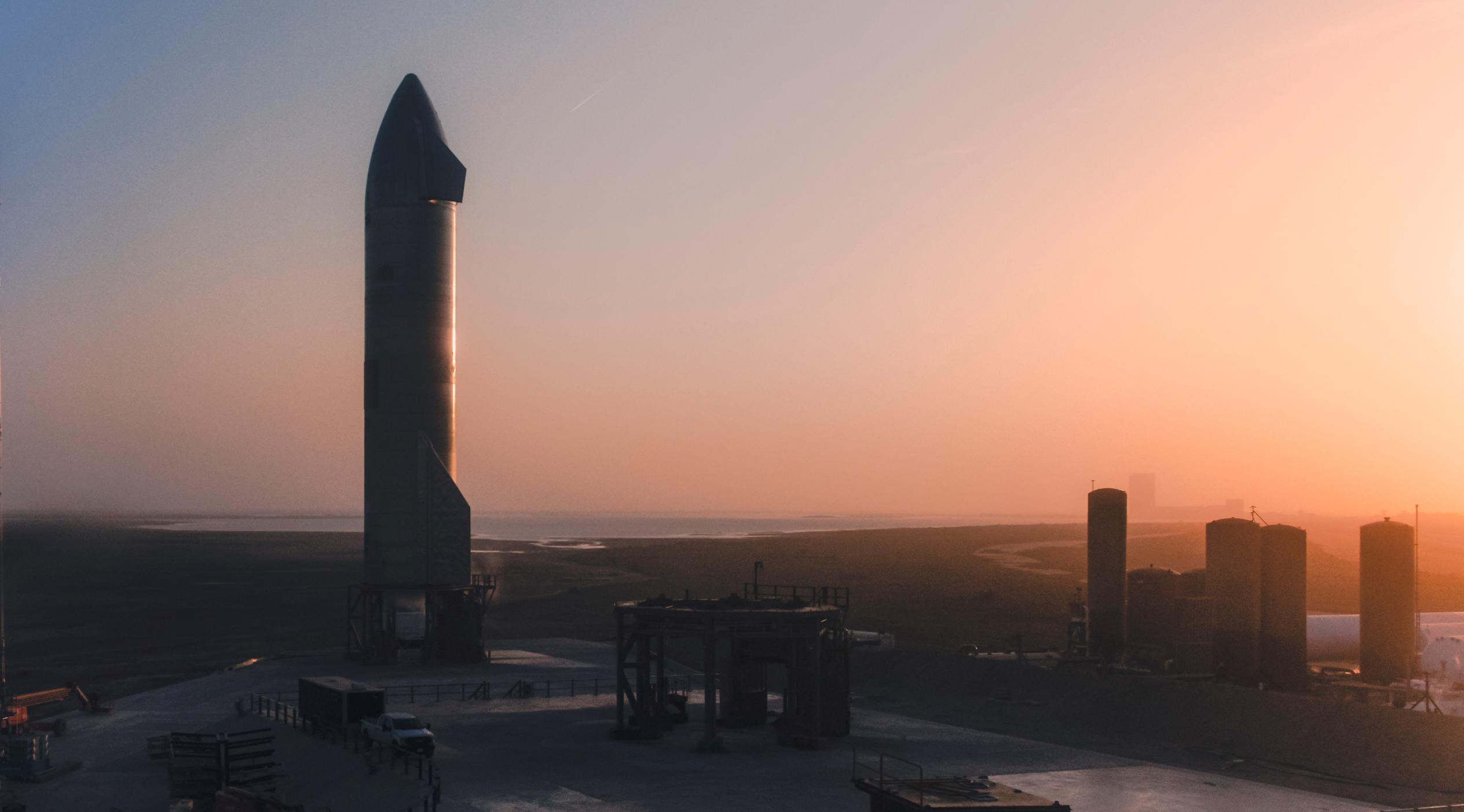
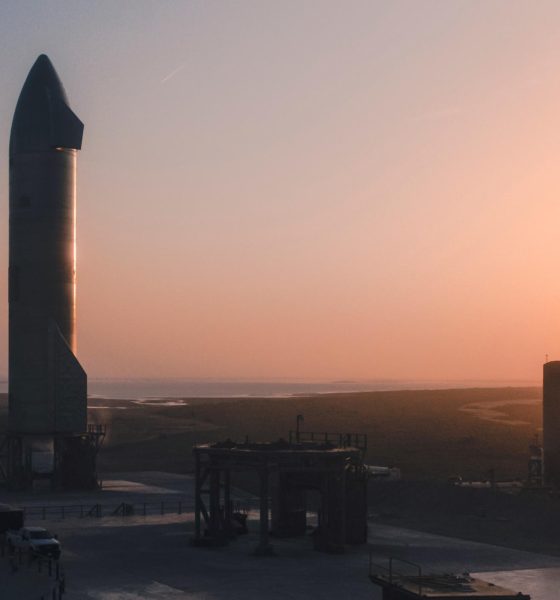
News
[Update: Scrubbed] SpaceX Starship to attempt same-day static fire and launch
Update: Starship SN11 did manage a timely static fire around 8am CDT but after hours of work, SpaceX appears to have scrubbed a Friday, March 26th launch attempt.
SpaceX’s website has yet to be updated and Friday’s FAA TFR is still active but a road closure meant to last until 7:30 pm CDT to cover the static fire and launch was retracted after the highway was reopened around 2:45 pm. It’s unclear what caused the scrub but weather or technical issues from the static fire are two likely candidates. SpaceX still has TFRs active on Saturday and Sunday, but the company hasn’t tested or flown on a weekend in months.
Lacking only an official confirmation, SpaceX appears to be readying the fourth full-size Starship prototype to attempt a Raptor static fire test and launch on the same day.
That hopeful day in question happens to be today – Friday, March 26th. If all goes according to plan, Starship serial number SN11 will fire up its three Raptors, verifying their health after an engine was apparently swapped out on Wednesday. Possibly just an hour or two later, after detanking and retanking liquid oxygen and methane propellant, the Starship prototype could lift off on SpaceX’s fourth high-altitude test flight.
Late on March 24th, SpaceX rolled Raptor engine SN46 from its Boca Chica factory to the launch pad, where Starship SN11 is installed on one of two suborbital launch mounts. The engine move and subsequent installation came as a surprise, as nobody managed to catch an implied Starship SN11 engine removal in the two or three days prior (extremely thick fog being the likeliest cause).
The implied issue with the Raptor that was removed is likely to blame for a several-day launch delay that followed Starship’s seemingly successful Monday static fire. After that test, SN11’s launch was initially scheduled as early as Tuesday or Wednesday, only to slip day by day as the week proceeded. SN11 first rolled to the launch pad on March 8th, just 18 days ago, so launch delays don’t come as a huge surprise given that the current factory-to-launch record for a three-engine Starship is 33 days, three static fires, and one engine swap.
If SN11 manages a same-day static fire and launch on March 26th, it will still crush that record by almost 50%. To an extent, the feat also isn’t unprecedented. On March 3rd, Starship SN10 aborted its first true launch attempt milliseconds after Raptor ignition when the rocket’s flight computer detected indications that they were producing too much thrust. Amazingly, instead of scrubbing the launch attempt, SpaceX loosened Starship SN10’s thrust limit parameters and tried again, successfully lifting off just three hours after the abort.
Despite the abort and immediate hands-free recycle, Starship SN10 subsequently became the first prototype of its kind to launch to 10 km (6.2 mi), free-fall back to earth, and land in one piece. Minutes later, a fire and harder landing than expected conspired to make SN10 explode, but the test flight was arguably still a massive success. Simultaneously, the flight indicated that Starships are technically capable of successfully flying hours after a post-ignition launch abort, demonstrating an extraordinary level of robustness for clustered high-performance rocket engines.
As such, while it’s probably reasonable to assume that Starship SN11 wont launch today, SN10 proved that there is nonzero chance of a static fire and launch hours apart. Additionally, given just how close SN10 go to unequivocal success (i.e. a soft and survivable landing), Starship SN11 has the best chance yet at at launching, landing, and making it through the ordeal without exploding.
Starship SN11’s third static fire and first launch attempt are both currently scheduled sometime between 7am and 7:30pm CDT (UTC-5). Stay tuned for updates as we wait for SpaceX’s official confirmation and an evacuation notice of Boca Chica Village residents.

News
Tesla is improving Giga Berlin’s free “Giga Train” service for employees
With this initiative, Tesla aims to boost the number of Gigafactory Berlin employees commuting by rail while keeping the shuttle free for all riders.
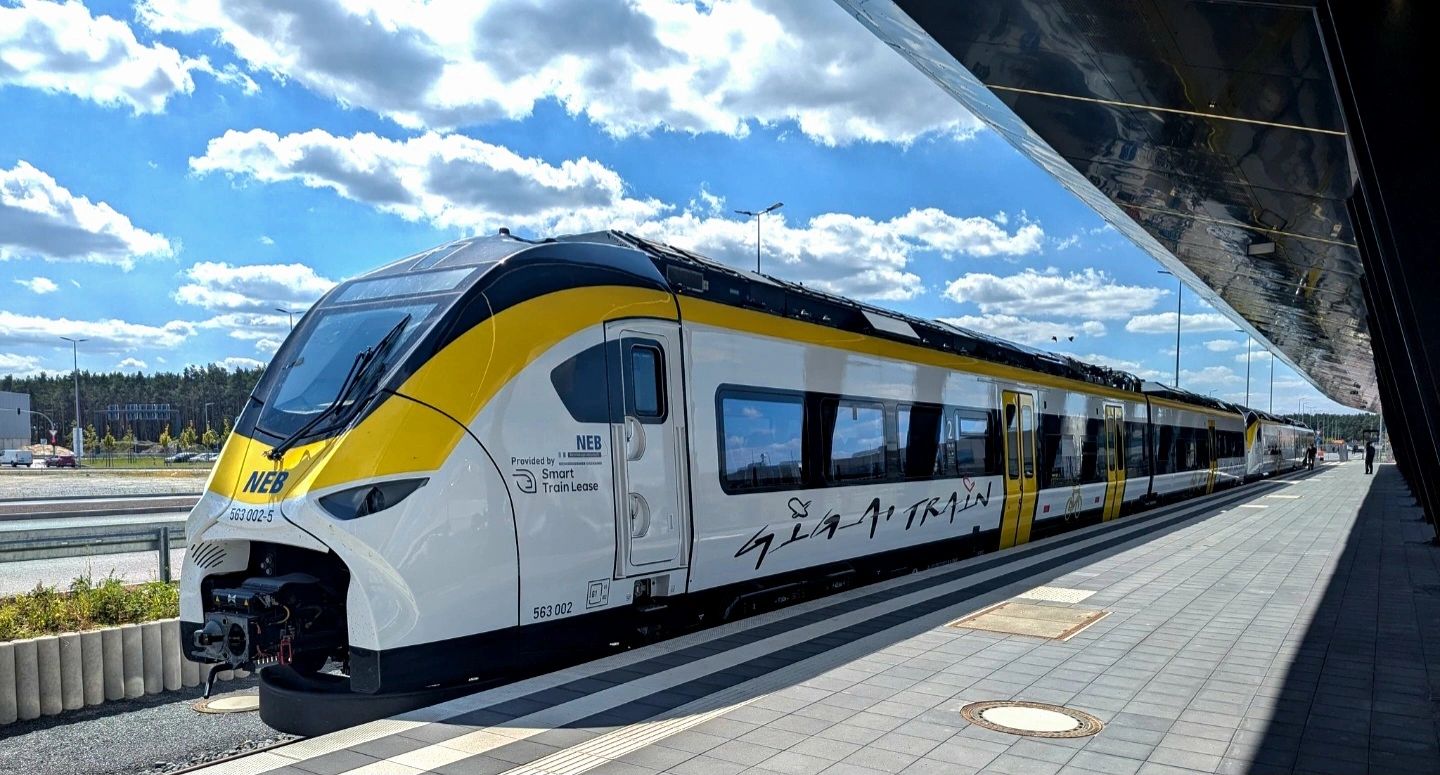
Tesla will expand its factory shuttle service in Germany beginning January 4, adding direct rail trips from Berlin Ostbahnhof to Giga Berlin-Brandenburg in Grünheide.
With this initiative, Tesla aims to boost the number of Gigafactory Berlin employees commuting by rail while keeping the shuttle free for all riders.
New shuttle route
As noted in a report from rbb24, the updated service, which will start January 4, will run between the Berlin Ostbahnhof East Station and the Erkner Station at the Gigafactory Berlin complex. Tesla stated that the timetable mirrors shift changes for the facility’s employees, and similar to before, the service will be completely free. The train will offer six direct trips per day as well.
“The service includes six daily trips, which also cover our shift times. The trains will run between Berlin Ostbahnhof (with a stop at Ostkreuz) and Erkner station to the Gigafactory,” Tesla Germany stated.
Even with construction continuing at Fangschleuse and Köpenick stations, the company said the route has been optimized to maintain a predictable 35-minute travel time. The update follows earlier phases of Tesla’s “Giga Train” program, which initially connected Erkner to the factory grounds before expanding to Berlin-Lichtenberg.
Tesla pushes for majority rail commuting
Tesla began production at Grünheide in March 2022, and the factory’s workforce has since grown to around 11,500 employees, with an estimated 60% commuting from Berlin. The facility produces the Model Y, Tesla’s best-selling vehicle, for both Germany and other territories.
The company has repeatedly emphasized its goal of having more than half its staff use public transportation rather than cars, positioning the shuttle as a key part of that initiative. In keeping with the factory’s sustainability focus, Tesla continues to allow even non-employees to ride the shuttle free of charge, making it a broader mobility option for the area.
News
Tesla Model 3 and Model Y dominate China’s real-world efficiency tests
The Tesla Model 3 posted 20.8 kWh/100 km while the Model Y followed closely at 21.8 kWh/100 km.
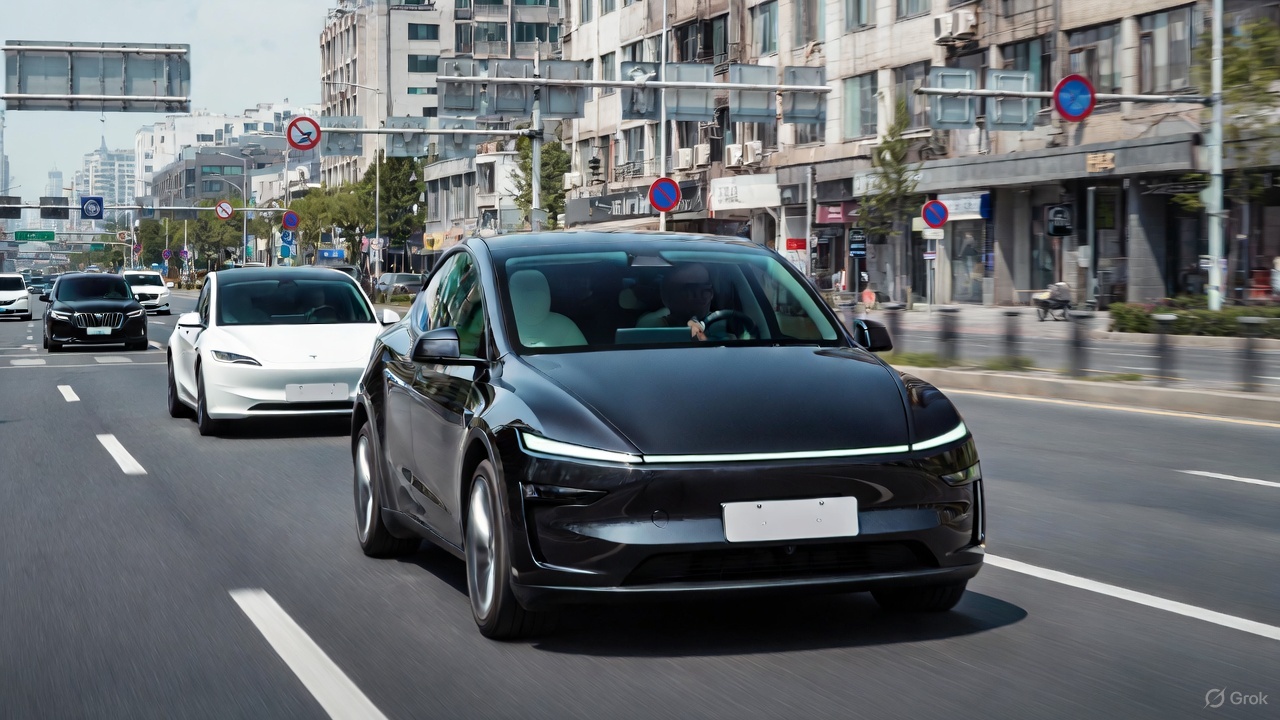
Tesla’s Model 3 and Model Y once again led the field in a new real-world energy-consumption test conducted by China’s Autohome, outperforming numerous rival electric vehicles in controlled conditions.
The results, which placed both Teslas in the top two spots, prompted Xiaomi CEO Lei Jun to acknowledge Tesla’s efficiency advantage while noting that his company’s vehicles will continue refining its own models to close the gap.
Tesla secures top efficiency results
Autohome’s evaluation placed all vehicles under identical conditions, such as a full 375-kg load, cabin temperature fixed at 24°C on automatic climate control, and a steady cruising speed of 120 km/h. In this environment, the Tesla Model 3 posted 20.8 kWh/100 km while the Model Y followed closely at 21.8 kWh/100 km, as noted in a Sina News report.
These figures positioned Tesla’s vehicles firmly at the top of the ranking and highlighted their continued leadership in long-range efficiency. The test also highlighted how drivetrain optimization, software management, and aerodynamic profiles remain key differentiators in high-speed, cold-weather scenarios where many electric cars struggle to maintain low consumption.
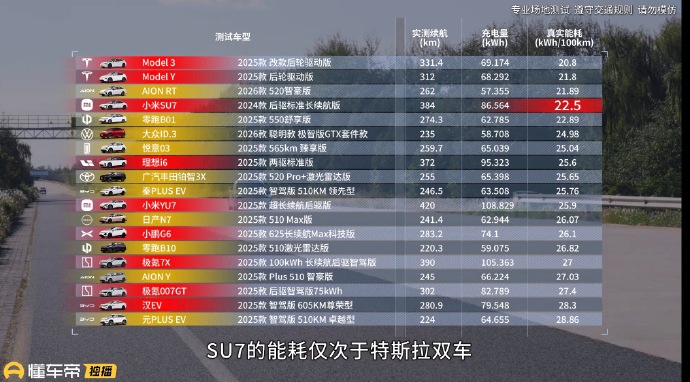
Xiaomi’s Lei Jun pledges to continue learning from Tesla
Following the results, Xiaomi CEO Lei Jun noted that the Xiaomi SU7 actually performed well overall but naturally consumed more energy due to its larger C-segment footprint and higher specification. He reiterated that factors such as size and weight contributed to the difference in real-world consumption compared to Tesla. Still, the executive noted that Xiaomi will continue to learn from the veteran EV maker.
“The Xiaomi SU7’s energy consumption performance is also very good; you can take a closer look. The fact that its test results are weaker than Tesla’s is partly due to objective reasons: the Xiaomi SU7 is a C-segment car, larger and with higher specifications, making it heavier and naturally increasing energy consumption. Of course, we will continue to learn from Tesla and further optimize its energy consumption performance!” Lei Jun wrote in a post on Weibo.
Lei Jun has repeatedly described Tesla as the global benchmark for EV efficiency, previously stating that Xiaomi may require three to five years to match its leadership. He has also been very supportive of FSD, even testing the system in the United States.
Elon Musk
Elon Musk reveals what will make Optimus’ ridiculous production targets feasible
Musk recent post suggests that Tesla has a plan to attain Optimus’ production goals.
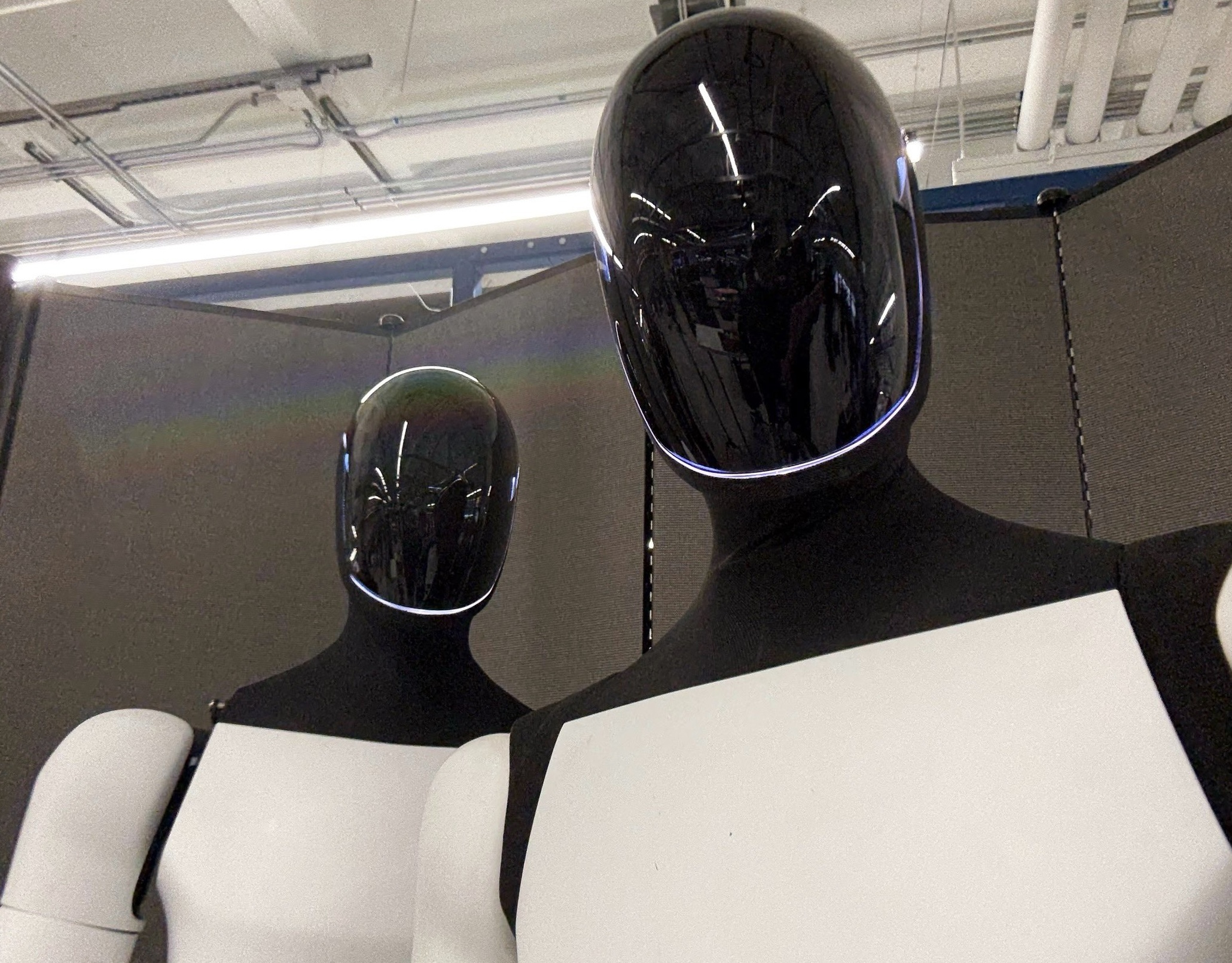
Elon Musk subtly teased Tesla’s strategy to achieve Optimus’ insane production volume targets. The CEO has shared his predictions about Optimus’ volume, and they are so ambitious that one would mistake them for science fiction.
Musk’s recent post on X, however, suggests that Tesla has a plan to attain Optimus’ production goals.
The highest volume product
Elon Musk has been pretty clear about the idea of Optimus being Tesla’s highest-volume product. During the Tesla 2025 Annual Shareholder Meeting, Musk stated that the humanoid robot will see “the fastest production ramp of any product of any large complex manufactured product ever,” starting with a one-million-per-year line at the Fremont Factory.
Following this, Musk stated that Giga Texas will receive a 10 million-per-year unit Optimus line. But even at this level, the Optimus ramp is just beginning, as the production of the humanoid robot will only accelerate from there. At some point, the CEO stated that a Mars location could even have a 100 million-unit-per-year production line, resulting in up to a billion Optimus robots being produced per year.
Self-replication is key
During the weekend, Musk posted a short message that hinted at Tesla’s Optimus strategy. “Optimus will be the Von Neumann probe,” the CEO wrote in his post. This short comment suggests that Tesla will not be relying on traditional production systems to make Optimus. The company probably won’t even hire humans to produce the humanoid robot at one point. Instead, Optimus robots could simply produce other Optimus robots, allowing them to self-replicate.
The Von Neumann is a hypothetical self-replicating spacecraft proposed by the mathematician and physicist John von Neumann in the 1940s–1950s. The hypothetical machine in the concept would be able to travel to a new star system or location, land, mine, and extract raw materials from planets, asteroids, and moons as needed, use those materials to manufacture copies of itself, and launch the new copies toward other star systems.
If Optimus could pull off this ambitious target, the humanoid robot would indeed be the highest volume product ever created. It could, as Musk predicted, really change the world.









